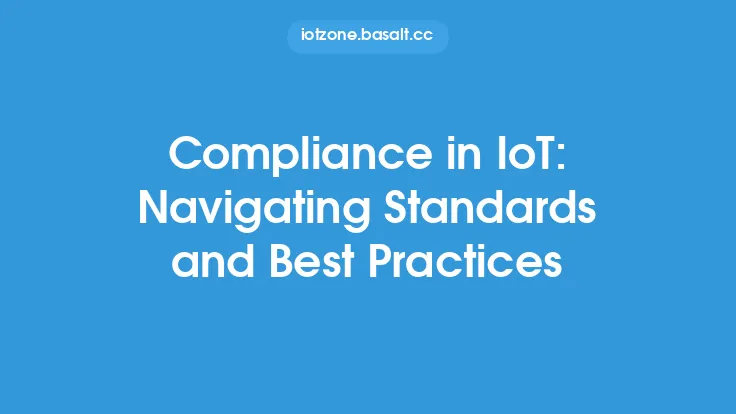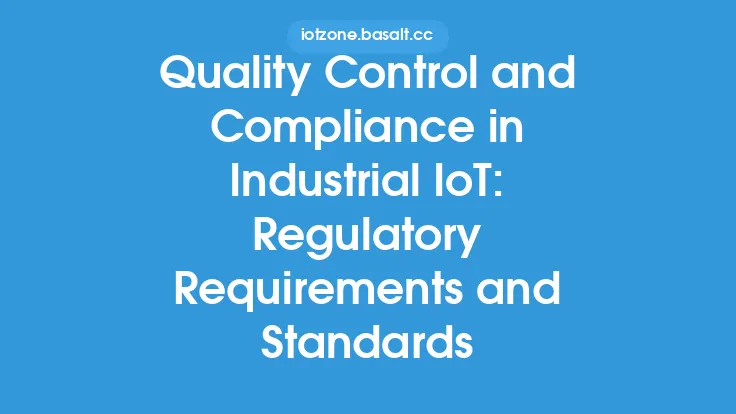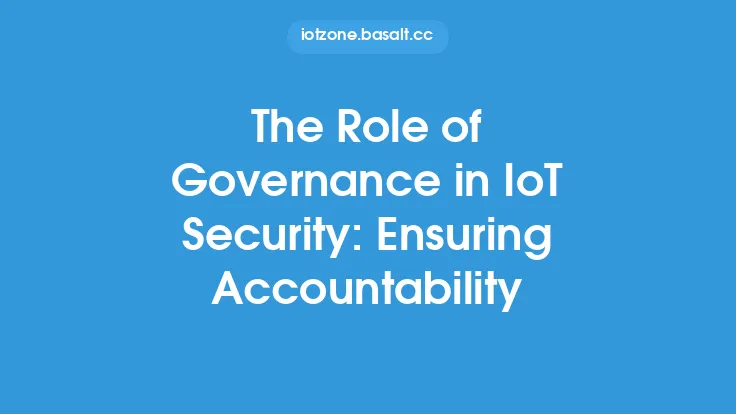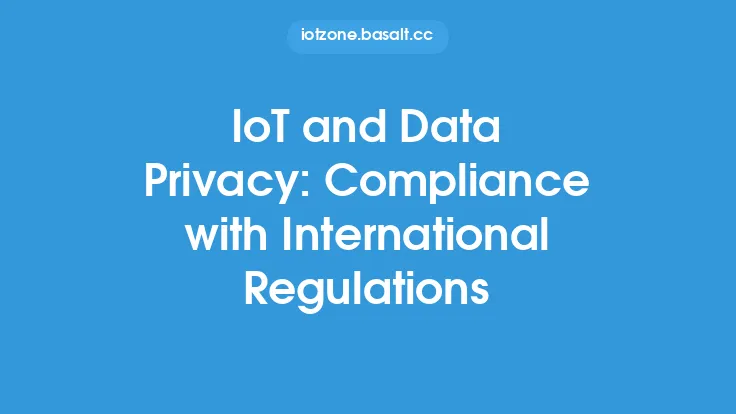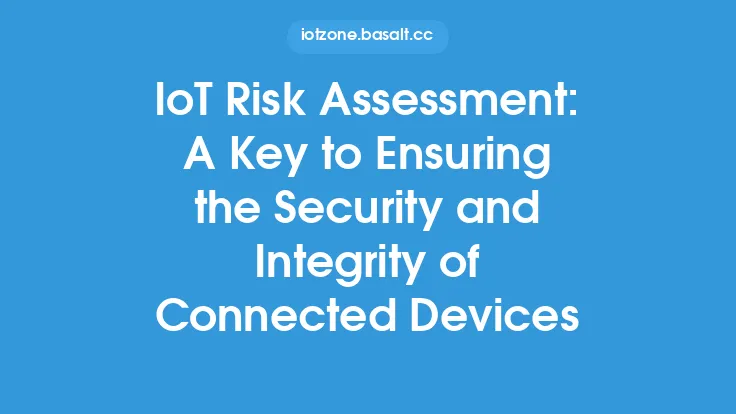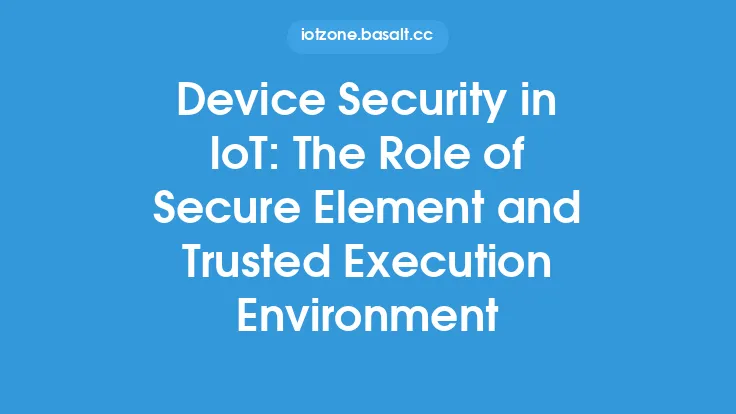The Internet of Things (IoT) has revolutionized the way we live and work, with an estimated billions of devices connected to the internet. However, this increased connectivity has also introduced new security risks, making it essential for organizations to ensure compliance with IoT security standards. Compliance with these standards is crucial to protect against cyber threats, maintain data integrity, and prevent financial losses. In this article, we will delve into the world of IoT security standards, exploring the various frameworks, regulations, and best practices that organizations must adhere to.
Introduction to IoT Security Standards
IoT security standards are a set of guidelines and protocols that ensure the secure development, deployment, and maintenance of IoT devices and systems. These standards are designed to address the unique security challenges posed by IoT devices, such as limited computational resources, constrained power consumption, and the need for real-time communication. IoT security standards cover various aspects, including device security, data security, network security, and cloud security. Some of the key IoT security standards include the National Institute of Standards and Technology (NIST) Cybersecurity Framework, the International Organization for Standardization (ISO) 27001, and the Institute of Electrical and Electronics Engineers (IEEE) 802.15.4.
Regulatory Frameworks for IoT Security
Regulatory frameworks play a critical role in ensuring compliance with IoT security standards. Governments and regulatory bodies around the world have established laws and regulations to govern the development and deployment of IoT devices. For example, the European Union's General Data Protection Regulation (GDPR) and the California Consumer Privacy Act (CCPA) in the United States have introduced strict data protection requirements for IoT devices. Additionally, regulatory bodies such as the Federal Trade Commission (FTC) in the United States and the European Commission have issued guidelines and regulations for IoT security. Organizations must comply with these regulatory frameworks to avoid fines, penalties, and reputational damage.
Industry-Specific IoT Security Standards
Different industries have unique IoT security requirements, and as such, industry-specific standards have been developed. For example, the healthcare industry has the Health Insurance Portability and Accountability Act (HIPAA) and the Medical Device Security Standard (MDSS), which govern the security of medical devices and patient data. The industrial control systems (ICS) sector has the NIST Cybersecurity Framework for ICS, which provides guidelines for securing ICS devices and systems. The automotive industry has the Automotive Security Standard (ASS), which addresses the security of connected vehicles. Organizations operating in these industries must comply with these industry-specific standards to ensure the security and integrity of their IoT devices and systems.
Technical Requirements for IoT Security
IoT security standards also specify technical requirements for device security, data security, and network security. For example, the IoT device security standard, UL 2900, requires devices to have secure boot mechanisms, secure firmware updates, and secure communication protocols. The standard also requires devices to be designed with security in mind, including secure coding practices and vulnerability management. Additionally, IoT devices must comply with data security standards, such as encryption and access control, to protect sensitive data. Network security standards, such as the IEEE 802.1x, require IoT devices to authenticate and authorize before connecting to a network.
Best Practices for Ensuring Compliance
Ensuring compliance with IoT security standards requires a combination of technical and organizational measures. Organizations should adopt a risk-based approach to IoT security, identifying and mitigating potential security risks. They should also implement secure development practices, such as secure coding and testing, to ensure that IoT devices are designed with security in mind. Regular security audits and vulnerability assessments are also essential to identify and address potential security weaknesses. Furthermore, organizations should establish incident response plans and procedures to respond to security incidents and breaches. Finally, organizations should provide training and awareness programs for employees and stakeholders to ensure that they understand the importance of IoT security and their roles in maintaining it.
Challenges and Limitations
Ensuring compliance with IoT security standards is not without challenges and limitations. One of the main challenges is the lack of standardization across different industries and regions, making it difficult for organizations to navigate the complex regulatory landscape. Additionally, the rapid evolution of IoT technology and the increasing number of connected devices make it challenging for organizations to keep pace with the latest security threats and vulnerabilities. Furthermore, the limited computational resources and constrained power consumption of IoT devices make it difficult to implement robust security measures. Finally, the lack of awareness and training among employees and stakeholders can hinder an organization's ability to ensure compliance with IoT security standards.
Conclusion
In conclusion, ensuring compliance with IoT security standards is essential for organizations to protect against cyber threats, maintain data integrity, and prevent financial losses. IoT security standards provide a framework for secure development, deployment, and maintenance of IoT devices and systems. Regulatory frameworks, industry-specific standards, and technical requirements all play a critical role in ensuring compliance. Organizations must adopt a risk-based approach to IoT security, implement secure development practices, and establish incident response plans and procedures to ensure compliance. While there are challenges and limitations to ensuring compliance, the benefits of IoT security far outweigh the costs, and organizations must prioritize IoT security to stay ahead of the evolving threat landscape.
